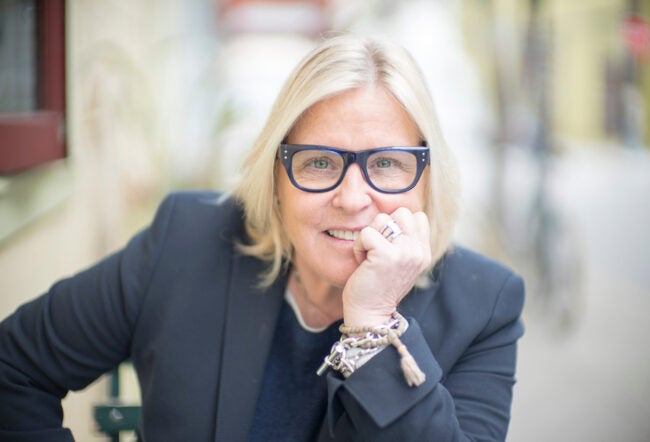The economy is booming, you’ve got a great idea for a new high-tech company, and you know that venture money is more available than it’s ever been. How do you get it? If the ‘you’ is a ‘she’, does that hurt your chances for success? A panel of five women – three entrepreneurs and two venture capitalists – told their stories and offered suggestions at the Oct. 8
Below is a summary of their advice:
On business plans: "They should be short and sweet," preferably one-page summaries done on Powerpoint, says Margaret Wyant, a former executive at Procter & Gamble, consultant and entrepreneur and now principal of Cincinnati-based Isabella Capital LLC, a $10 million venture fund focused on women-led technology-driven companies.
"Business plans referred to us by colleagues get our attention," says Christine Cordaro, general partner in Viridian Capital, a venture capital fund in San Francisco that invests mainly in companies led by or geared to women. "Women need informal networks of people who have gone through the same process. We also pay attention to the existence of a proprietary model that will give the company a sustainable advantage."
On getting funding: "I used 16 credit cards, dipped into my 401k, sold my house and then went into family members’ savings accounts," says Jeannette White, founder and CEO of Sytel, a 12-year-old information technology company based in Bethesda, Md. A next-door neighbor who had recently divorced "and had money to burn" helped Julie Heldman and her husband start up Signature Eyewear, a designer and marketer of prescription eyeglass frames in Inglewood, Ca..
While not dismissing the use of credit cards as a source of funding – a strategy used more frequently by women than men – Cordaro noted that the road to funding is frequently paved by "a very active angel network and single angel investor, preferably one who is a seasoned entrepreneur and can contribute money as well as contacts and ideas."
On the current state of venture capital: Wyant described "an incredibly vibrant entrepreneurial atmosphere where people with ideas can get money." Competition is fiercer than ever among venture capital firms, she adds, while "among entrepreneurs you see fewer gray hairs and more women."
Eleven years ago, "the deals were smaller and much more time was spent on making sure there was a feasible business model," says Cordaro. "The expectation was that it would take five to seven years before any distributions. This has changed dramatically. There is so much money in venture capital funds that they look like investment banks. All the emphasis now is placed on financial performance in a very short time" rather than on whether you have a viable product.
On the challenges facing women who are seeking venture capital: "Men are used to evaluating John Wayne, not a soft-spoken, smaller person," says Wyant. Women own nearly 40% of businesses in the U.S. and account for 70% of the startups, she adds, yet venture capitalists invest "what is believed to be less than 4% of venture funds in women-led businesses, mainly because women are not inside the networks. I don’t know what the right balance is, but that’s not it." Wyant described a woman in her forties who had run a $4 million company for 10 years and was now interested in getting venture capital. "Male venture capitalists didn’t want to invest because she had taken so long to get the business to $4 million," says Wyant. "But I looked at her, saw that her two children were grown, and knew that she was ready to take off."
"Women definitely have a difficult time getting the attention of venture capitalists, especially if it’s their first go at it," says Cordaro. Among the six companies the Viridian group has funded are four first-time entrepreneurs and two hired guns brought in to grow the company and take it public. "Women need to understand their skill set," Cordaro says. "There are entrepreneurs and there are people who know how to grow a company. Usually they aren’t the same people."
On the challenges women face running their own companies: Physical size "is a big differentiator," says Anne Perlman, a veteran of 21 years of experience in Silicon Valley and currently CEO of San Francisco-based Moai Technologies, a provider of internet auction solutions which took its first venture funding in 1997. "It’s easier to get noticed if you’re larger. But women have the element of surprise, and when you are the only woman to walk into a boardroom, you tend to get recognized. Do whatever you can to make yourself different. And remember that it’s a meritocracy. If you do excellent work, you get noticed."
Adds White, echoing perhaps the most dominant theme of the discussion, "At conferences and in board rooms, women tend to be overlooked and they are the last to be heard. Being part of a good network helps."
On the mistakes most companies consistently make: "Undercapitalization, not understanding how much money your company requires," is the biggest mistake, says Cordaro. "The second biggest is not having the right management team. For example, the vice president of business development has to go out and establish key partnerships. If he or she doesn’t, that’s a critical failure."
Another mistake is a company’s inability to recognize when a member of the management team is not growing as fast as he or she should. "Eight out of ten people don’t grow with the firm," states White.
In the high-tech market, adds Perlman, "growth is a pillar of success. If you don’t have it, you’re dead."



